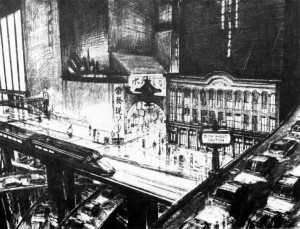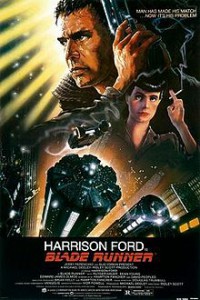 Ridley Scott’s 1982 sci-fi noir is noteworthy for many reasons, but the chief factor is its look: the dystopian, neon-lit, billboard metropolis at the center of Blade Runner has inspired a generation’s worth of production design. And in these pages, you can see where that groundbreaking design came from.
Ridley Scott’s 1982 sci-fi noir is noteworthy for many reasons, but the chief factor is its look: the dystopian, neon-lit, billboard metropolis at the center of Blade Runner has inspired a generation’s worth of production design. And in these pages, you can see where that groundbreaking design came from.
Coinciding with the release of Blade Runner in 1982, David Scroggy published the Blade Runner Sketchbook, a book with 100+ production drawings and artwork for Ridley Scott’s classic sci-fi film. The sketchbook features visual work by Scott himself, artist Mentor Huebner, and costume designer Charles Knode, but most notably a slew of drawings by artist, futurist, and illustrator Syd Mead.
This sketchbook has been out of print for years and scant few paper copies remain available for purchase. So digital versions have filled the void online, and now comes this: a version that lets you revel in the Blade Runner artwork in full-screen mode.
For the entire book, head over here.
 Blade Runner is a 1982 American science fiction film directed by Ridley Scott and starring Harrison Ford, Rutger Hauer, and Sean Young. The screenplay, written by Hampton Fancher and David Peoples, is loosely based on the novel Do Androids Dream of Electric Sheep? by Philip K. Dick.
Blade Runner is a 1982 American science fiction film directed by Ridley Scott and starring Harrison Ford, Rutger Hauer, and Sean Young. The screenplay, written by Hampton Fancher and David Peoples, is loosely based on the novel Do Androids Dream of Electric Sheep? by Philip K. Dick.
The film depicts a dystopian Los Angeles in November 2019 in which genetically engineered organic robots called replicants—visually indistinguishable from adult humans—are manufactured by the powerful Tyrell Corporation as well as by other “mega–manufacturers” around the world. Their use on Earth is banned and replicants are exclusively used for dangerous, menial or leisure work on Earth’s off-world colonies. Replicants who defy the ban and return to Earth are hunted down and “retired” by police special operatives known as “Blade Runners”. The plot focuses on a brutal and cunning group of recently escaped replicants hiding in Los Angeles and the burnt out expert Blade Runner, Rick Deckard (Harrison Ford), who reluctantly agrees to take on one more assignment to hunt them down.
Blade Runner initially polarized critics: some were displeased with the pacing, while others enjoyed its thematic complexity. The film performed poorly in North American theaters but has since become a cult film. The film has been hailed for its production design, depicting a “retrofitted” future, and remains a leading example of the neo-noir genre. It brought the work of Philip K. Dick to the attention of Hollywood and several later films were based on his work. Ridley Scott regards Blade Runner as “probably” his most complete and personal film. In 1993 the film was selected for preservation in the United States National Film Registry by the Library of Congress as being “culturally, historically, or aesthetically significant”.
One of the Blade Runner Convention Reels featuring interviews with Ridley Scott, Syd Mead and Douglas Trumbull about making Blade Runner universe. This 16 mm featurette, made by M. K. Productions in 1982




